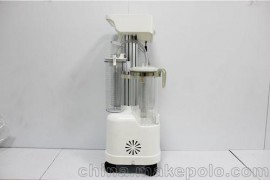3月8日,中国科学院动物研究所动物行为与化学通讯组的研究在《化学感觉》(Chemcial Senses)杂志在线发表。论文首次用虎皮鹦鹉证明:(1)鸟类的身体气味可以用于嗅觉的性识别或性吸引,去年国外的鸟类学家发表文章还认为鸟类无嗅觉的性识别;(2)多数鸟类具有的最重要的外泌腺——尾脂腺分泌了这些活性小分子成分——性信息素,并通过鸟类理羽(preening)行为,将其涂抹到羽被,进行传递,引起身体气味的活性。之前,在除了鸟以外的其它动物类群,都证明存在嗅觉的性通讯和性信息素。在虎皮鹦鹉中,尾脂腺分泌的十八醇、十九醇和二十醇的比率在雄鸟中显著高于雌鸟,并对雌鸟有明显的吸引作用,组成了雄性信息素。
过去普遍认为鸟类视觉和听觉发达,而嗅觉(olfaction)极度退化,相应的调节鸟类社会行为的通讯主要依靠视觉和听觉信号,而不是化学信号。该项研究选取全世界最为普遍的笼养鸟和模式实验鸟——虎皮鹦鹉作为实验对象,利用传统的双向选择和GC-MS分析方法,证明鸟类确实存在“性信息素的通讯”。
另一方面,以往认为尾脂腺在鸟类中主要起到羽毛防水和折射不同波长光的作用,化学研究上也主要集中在对尾脂腺分泌的蜡脂成分的分析上。最近,尽管国际上开始关注鸟的化学通讯,但是有关文章都没能将化学分析和生物测定成功结合而达到信息素鉴定的水平。正如论文评阅人所说:尽管很久以来就推测有些鸟的尾脂腺可能产生性信息素,但是该论文第一次提供了这类信息素组成的实验证据,也为以后的同类研究提供了参考方法。(生物谷Bioon.com)
生物谷推荐原文出处:
Chemical Senses, doi:10.1093/chemse/bjq025
Uropygial Gland-Secreted Alkanols Contribute to Olfactory Sex Signals in Budgerigars
Jian-Xu Zhang, Wei Wei, Jin-Hua Zhang and Wei-He Yang
The State Key Laboratory of Integrated Management and Research of Insect and Rodent Pests and the Center for Integrative Studies of Biology, the Institute of Zoology, the Chinese Academy of Sciences, Beichenxi Road 1-5, Beijing 100101, China
The possible role of uropygial gland-secreted compounds in olfactory discrimination of sex or sex attractants in the budgerigar, Melopsittacus undulatus, was investigated using behavioral 2-choice tests and gas chromatography–mass spectrometry analysis. Our data showed that female budgerigars were capable of distinguishing males from females in a Y maze via body odor, indicating its sexual dimorphism. When we conducted a chemical assay of the uropygial preen gland secretions, we found 4 times more volatile octadecanol, nonadecanol, and eicosanol in ratios in males than in females, making them putative male pheromone candidates. Female birds also showed overt preferences for the odor of male preen gland secretions or the 3-alkanol blend equivalent preened onto the plumage of a male over that of female counterparts. Removal of any one alkanol was associated with a loss of attractiveness to the female. In another test device (a test cage) with visible male bird stimulus, females chose the male with the 3-alkanol blend of males over the other male with female preen gland secretion, whereas did not differentiate their responses between the males with either this blend or male preen gland secretions. The behavioral data robustly suggested that the 3 alkanols synergistically created a female attractant odor or male pheromone in the budgerigar and that bird uropygial glands have broader implications in sexual behavior than previously known. This is the first investigation with bioassay of components of the gland in a bird species.







